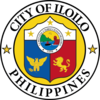
Cebu City, officially the City of Cebu, is a 1st class highly urbanized city in the Central Visayas region of the Philippines. It is the capital of the Cebu Province, where it is geographically located but is one of three cities that are administratively independent of the provincial government. According to the 2020 census, it has a population of 964,169 people, making it the sixth-most populated city in the nation and the most populous in the Visayas.

Iloilo City, officially the City of Iloilo, is a 1st class highly urbanized city in the Western Visayas region of the Philippines on the island of Panay. It is the capital city of the province of Iloilo, where it is geographically situated and grouped under the Philippine Statistics Authority, but remains politically independent in terms of government and administration. In addition, it is the center of the Iloilo–Guimaras Metropolitan Area, as well as the regional center and primate city of the Western Visayas region. According to the 2020 census, Iloilo City has a population of 457,626 people. For the metropolitan area, the total population is 1,007,945 people.

The National Museum of Anthropology, formerly known as the Museum of the Filipino People, is a component museum of the National Museum of the Philippines which houses Ethnological and Archaeological exhibitions. It is located in the Agrifina Circle, Rizal Park, Manila adjacent to the National Museum of Fine Arts building.

Juan Marcos Arellano y de Guzmán, or Juan M. Arellano, was a Filipino architect, best known for Manila's Metropolitan Theater (1935), Legislative Building, the Manila Central Post Office Building (1926), the Rizal Memorial Sports Complex (1934), the Central Student Church, the old Jaro Municipal Hall (1934) and the Old Iloilo City Hall (1935) in Iloilo, the Negros Occidental Provincial Capitol (1936), the Cebu Provincial Capitol (1937), the Bank of the Philippine Islands Cebu Main Branch (1940), Misamis Occidental Provincial Capitol Building (1935), Cotabato Municipal Hall (1940) and the Jones Bridge during the pre-war era.
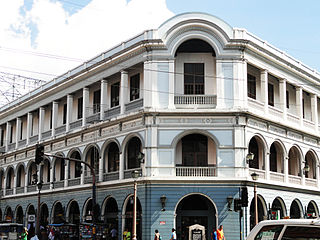
Iloilo City Proper is one of the seven districts of Iloilo City in the Western Visayas region of the Philippines. It is the second-most densely populated district, after Molo. It serves as the civic center of the city, housing the seat of the city and provincial governments, as well as other local, provincial, and regional government offices. The district also houses the majority of the city's financial institutions, where banks and other firms can be found on every corner of the streets. Iloilo City Proper is the current economic and financial center of Iloilo. According to the 2020 census, it has a population of 46,350 people.
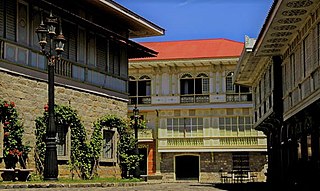
The architecture of the Philippines reflects the historical and cultural traditions in the country. Most prominent historic structures in the archipelago are influenced by Austronesian, Chinese, Spanish, and American architectures.
Don Tomás Bautista Mapúa was a Filipino architect, educator and businessman from the Philippines. He was the founder and first president of the Mapúa Institute of Technology (MIT) together with Civil Engr. Gonzalo T. Vales as co-founder and founding dean of school and co-founder and founding president of Central Colleges of the Philippines, after he established the school on February 25, 1925. He was the first registered architect in the Philippines and first worked at the Philippine Bureau of Public Works. He later established his own construction company, the MYT Construction Works, Inc.
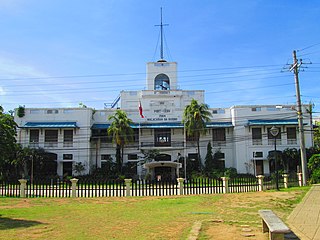
Malacañang sa Sugbo was the official residence of the President of the Philippines in the Visayas. It is located in Cebu City near the Port Area and Fort San Pedro, and within walking distance from the Basilica Menor del Santo Niño, Magellan's Cross, and City Hall. It is named after the Malacañang Palace, the official residence of the President in the capital city of Manila.

Museo Sugbo is a museum in Cebu City, Philippines. The museum is located in the former Cebu Provincial Detention and Rehabilitation Center (CPDRC) jail, and is located four blocks away from Plaza Independencia. The museum is owned by the Cebu provincial government.

The National Museum of Fine Arts, formerly known as the National Art Gallery, is an art museum in Manila, Philippines. It is located on Padre Burgos Avenue across from the National Museum of Anthropology in the eastern side of Rizal Park. The museum, owned and operated by the National Museum of the Philippines, was founded in 1998 and houses a collection of paintings and sculptures by classical Filipino artists such as Juan Luna, Félix Resurrección Hidalgo and Guillermo Tolentino.

Ancestral houses of the Philippines or Heritage Houses are homes owned and preserved by the same family for several generations as part of the Filipino family culture. It corresponds to long tradition by Filipino people of venerating Ancestors and Elders. Houses could be a simple house to a mansion. The most common ones are the "Bahay na Bato". Some houses of prominent families had become points of interest or museums in their community because of its cultural, architectural or historical significance. These houses that are deemed of significant importance to the Filipino culture are declared Heritage House by the National Historical Commission of the Philippines (NHCP), previously known as the National Historical Institute (NHI) of the Philippines. Preservation is of utmost importance as some ancestral houses have come into danger due to business people who buy old houses in the provinces, dismantle them then sell the parts as ancestral building materials for homeowners wishing to have the ancestral ambiance on their houses. These ancestral houses provide the current generation a look back of the country's colonial past through these old houses.

William Edward Parsons was an architect and city planner known for his works in the Philippines during the early period of American colonization in the country. As the consulting architect to the Philippine government from 1905 to 1914, he designed various structures throughout the country, most notably the Gabaldon school building plans.

Historical markers are installed by the National Historical Commission of the Philippines (NHCP) in the Philippines and places abroad that signify important events, persons, structures, and institutions in Philippine national and local histories. The plaques themselves are permanent signs installed by the NHCP in publicly visible locations on buildings, monuments, or in special locations. Local municipalities and cities can also install markers of figures and events of local significance. Though they may have the permission of the NHCP, these markers are barred from using the seal of the Republic of the Philippines.

The Aduana Building, also known as the Intendencia, was a Spanish colonial structure in Manila, Philippines that housed several government offices through the years. It is located in front of the BPI Intramuros at Plaza España, Soriano (Aduana) Ave. corner Muralla St. in Intramuros.

Calle Real, officially named as J.M. Basa Street, is a historic street located in the old downtown district Iloilo City Proper of Iloilo City, Philippines.The street often referred to as the "Escolta of Iloilo". It is home to several fine examples of historic luxury American era neoclassical, beaux-arts, and art deco buildings. The street has been famous since the Spanish Era. However, its importance has dwindled and the street has become less maintained; yet there have been efforts to revitalize the street, which include the restoration of the historic buildings along the street and beautification projects.
The Malacañang of the South, also known as the Presidential Guest House in Davao or Panacañang, is a presidential guest house in Panacan, Davao City that serves as the Philippine President's official residence in Mindanao. It is located in the compound and office complex of the Department of Public Works and Highways (DPWH) Davao Region.
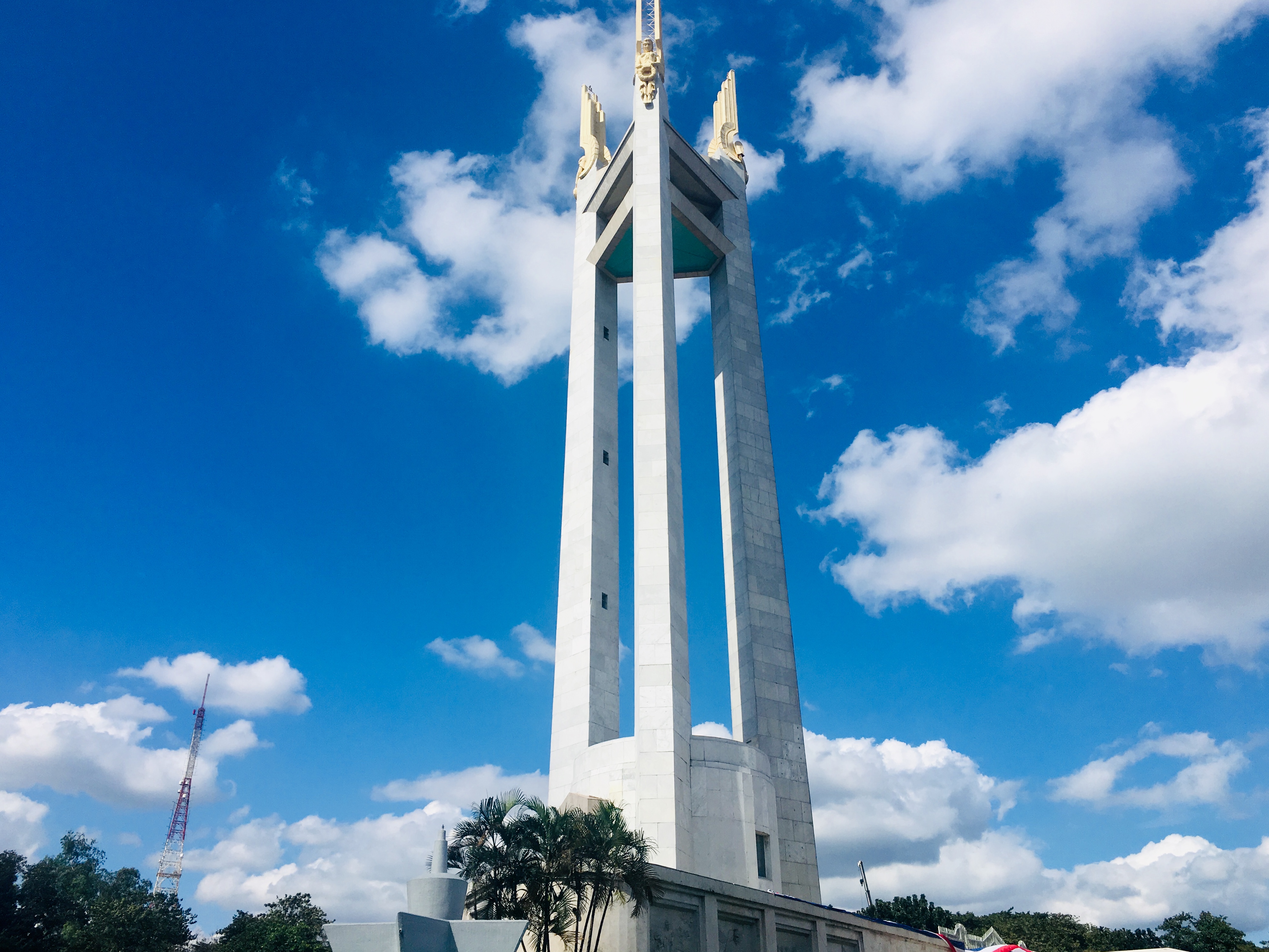
The Quezon Memorial Shrine is a monument and national shrine dedicated to former Philippine President Manuel Quezon located within the grounds of Quezon Memorial Circle in Quezon City, Metro Manila. It also houses a museum at its base.

The Malacañang of the North is a presidential museum in Paoay, Ilocos Norte, Philippines. It was the residence of the family of Ferdinand Marcos when he was the President of the Philippines.
Pedro Siochi was a Philippine architect and civil engineer of famous landmarks in the Philippines.

The Kalayaan Hall is a government building within the Malacañang Palace complex in Manila, Philippines. It houses the Presidential Museum and Library.



















